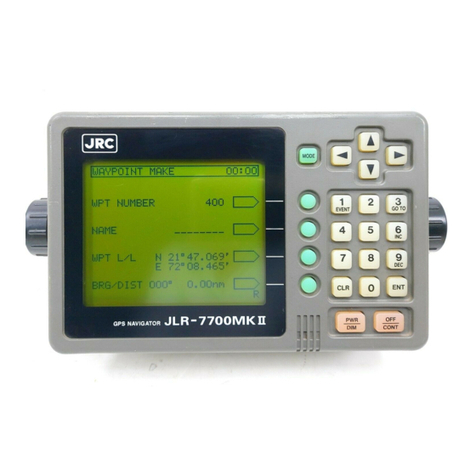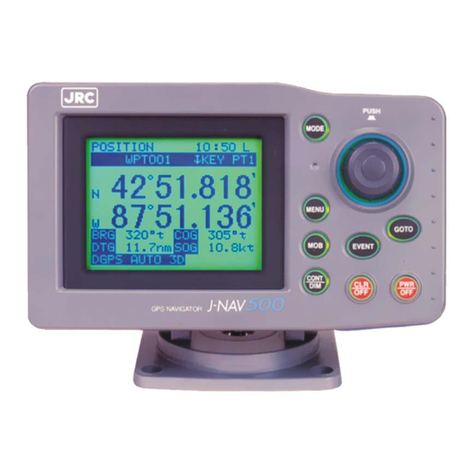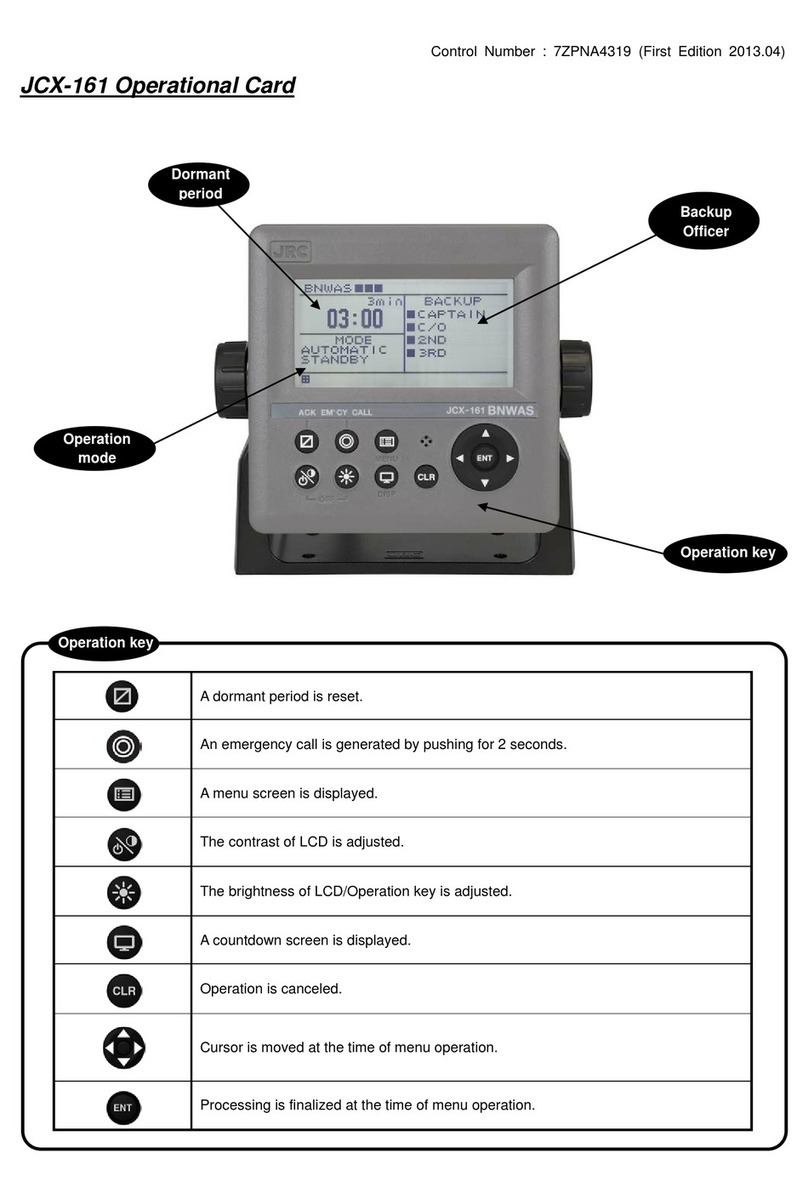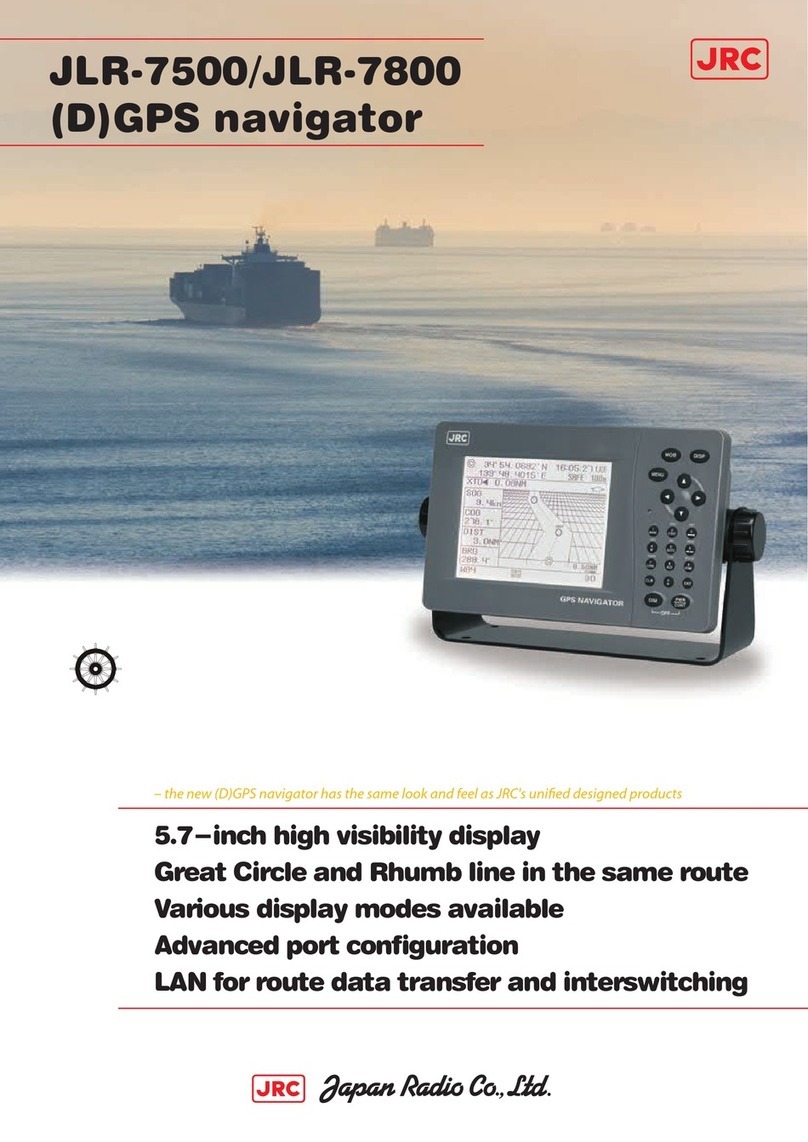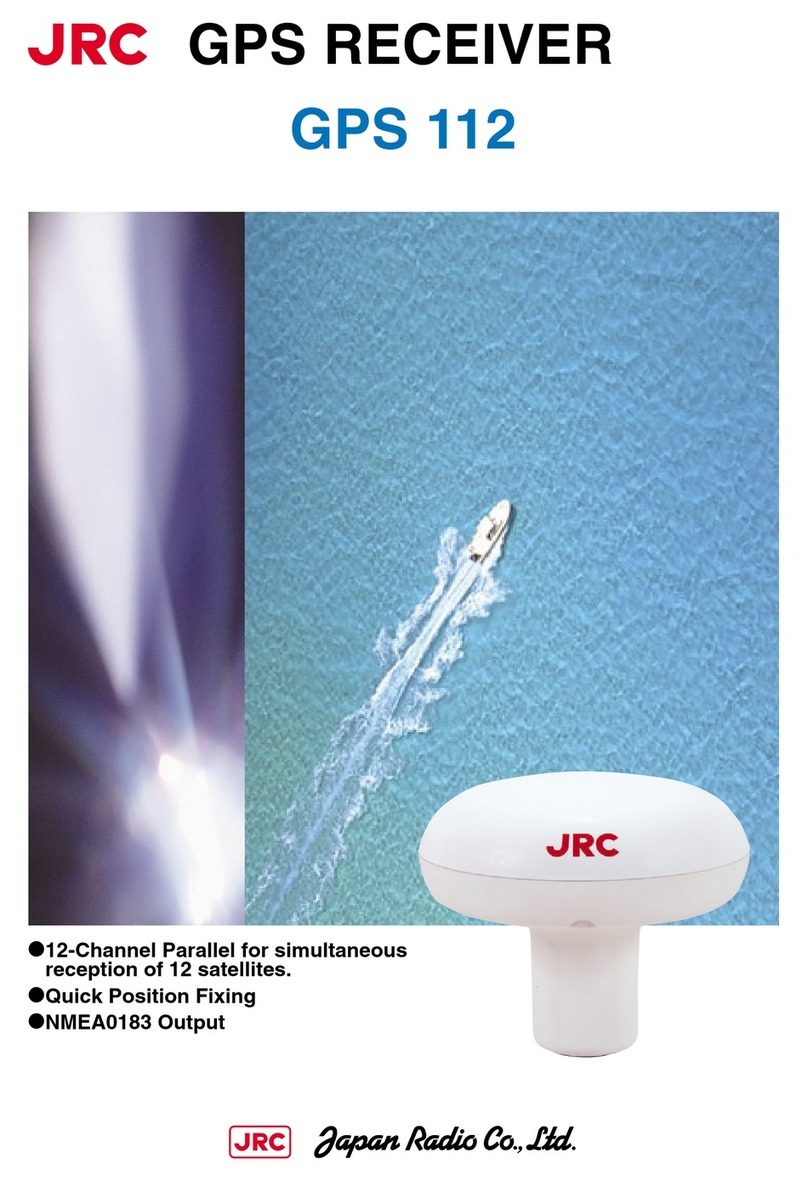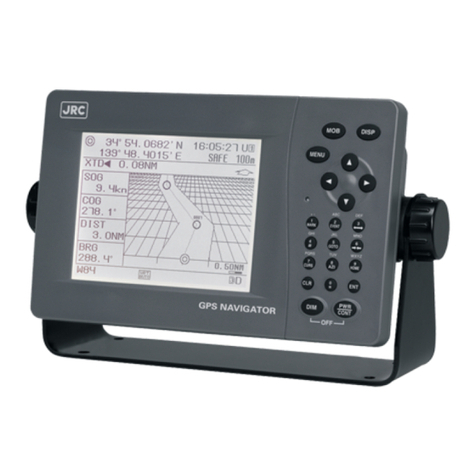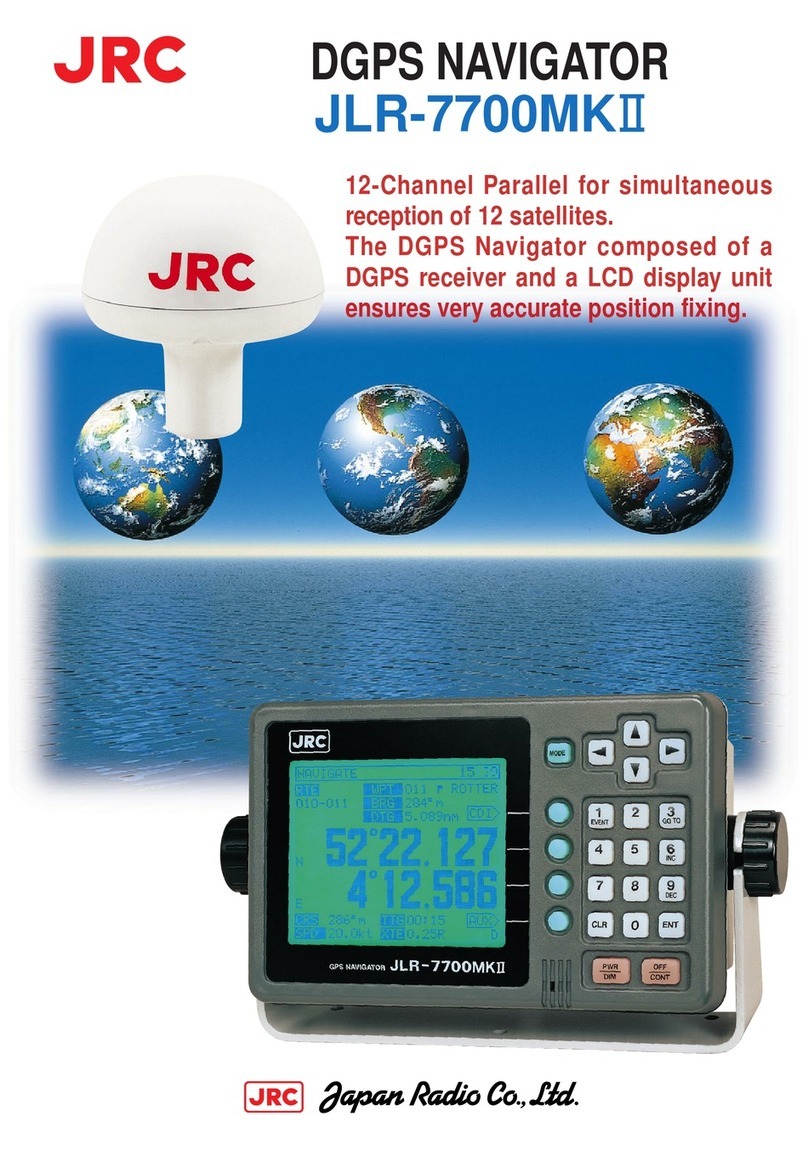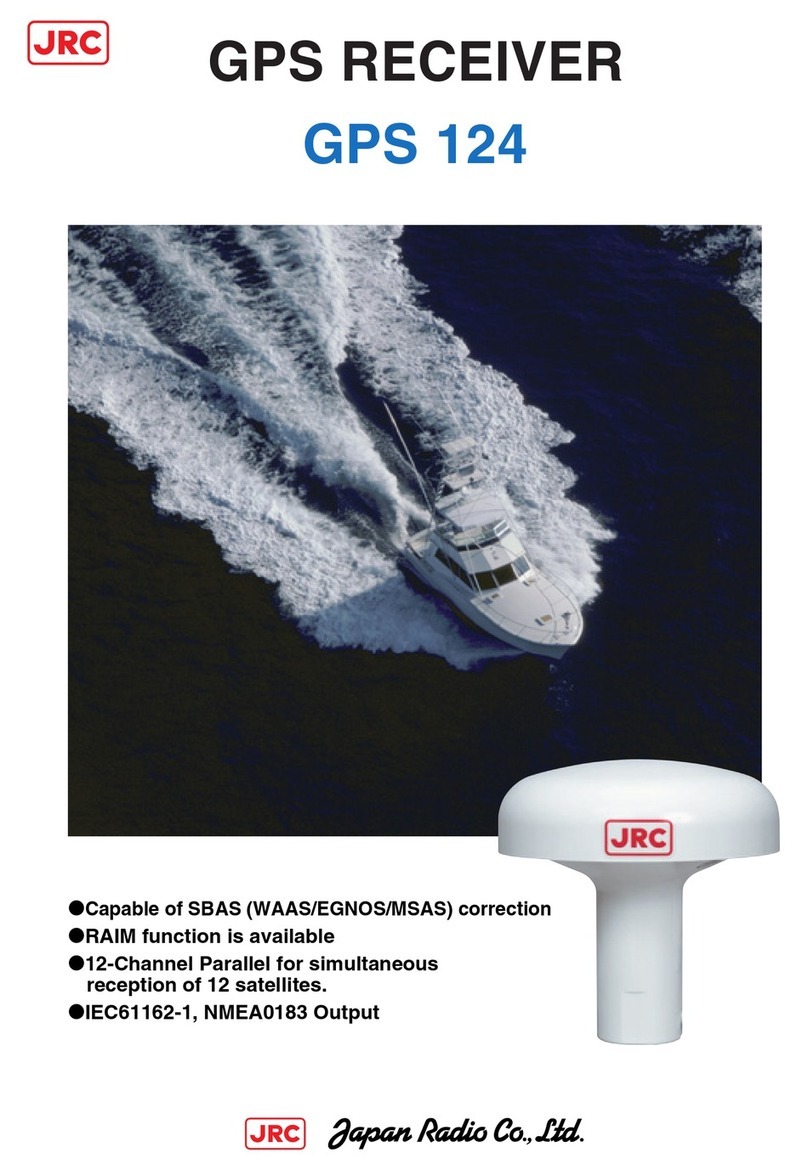
viii
Terminology
Term Meaning (Descriptions)
2D (2 dimension) Positioning with antenna elevation height in addition to satellite
data.
3D (3 dimension) The three dimensional position fix, 4 or more satellites required.
Active route Route that is currently used by a ship
Anchor alert This alert monitors that the own ship is the preset distance or more
away from the waypoint.
Arrival alert This alert informs that the own ship has traveled the preset distance,
approaching the waypoint.
Beacon information Beacon data which is broadcast by message type 16.
BeiDou BeiDou is a satellite positioning system that is managed by China.
Boundary alert This alert informs that the own ship has got into the preset route.
CCRP Abbreviation of Consistent Common Reference Point. Reference
position of the own ship.
CDI Abbreviation of Course Deviation Indicator. This indicator shows
information on the deviation from the scheduled route and on the
direction into which the ship should be steered.
Checksum An error detection method to check that the data has been correctly
transmitted.
COG Course Over Ground.
Course Direction in which the ship is traveling, which is the bearing mainly
displayed by the GPS.
CURRENT Sea and ocean currents, expressed in speed and direction.
Data route Ship route data that is stored in the memory of the equipment
Default gateway Equipment connected externally from a constructed network.
DGPS Abbreviation of Differential Global Positioning System. GPS
satellite error data sent from a reference station whose position is
accurately known is received via beacon from a beacon station,
improving positioning accuracy.
DISP-DPU The main circuitry of display unit.
FRAM Nonvolatile memory using a ferroelectric substance.
Geodetic Conditions for expressing position via latitude and longitude.
GPS Satellite (GPS) Abbreviation of Global Positioning System. Refers to satellites
launched for navigational support of military vessels managed by
the United States Department of Defense.
GLONASS GLONASS is a satellite positioning system that is managed by Russia.
HDOP Abbreviation of Horizontal Dilution of Precision. Indicates accuracy
of positioning. The smaller the number, the higher the accuracy. If
GPS satellites are unevenly distributed, this number will grow. If
GPS satellites are evenly distributed, this number will be smaller.
IEC IEC is the abbreviation of International Electrotechnical
Commission. It is an international standard governing electrical
and electronic technologies.
IPXX IPXX is Degrees of protection provided by enclosures (IP Code)
